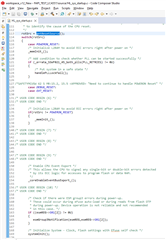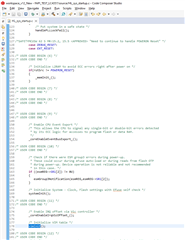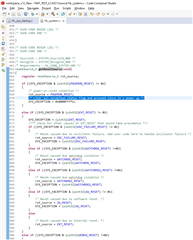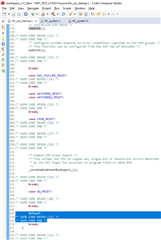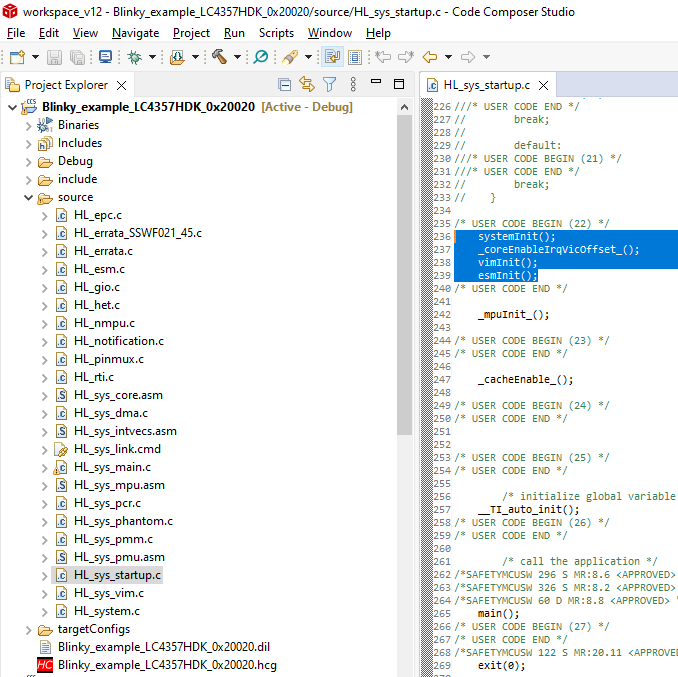Hi, TI team
I am creating a Serial Bootloader on a custom board using RM57x MPU, and I am asking because my application program is not working.
The Bootloader Sample I used is shown below.
The files below are taken from the TI forums.
Hercules_Ethernet_Bootloader_RM57.zip
UART_Bootloader_LC4357_New.zip
I deleted the Ethernet part of Hercules_Ethernet_Bootloader_RM57.
Combine the Serial processing part of UART_Bootloader_LC4357_New to create a Serial bootloader for RM57.
I attach the UART_Bootlader_RM57.zip serial bootloader file I created.
The bootloader was programmed through JTAG, and the application program was programmed through the bootloader.
The way to run the Application program in the bootloader is to make the Appliaction run if there is no input from the serial port when the bootloader is running.
After booting, the application I created does not work because it outputs messages through the serial console but does not receive input from the serial console.
The execution result is shown below.
Program Version = 100
spiWrEnable
Memory size : 1M bit
=================================
MAIN Start
=================================
Start init ETH no= 0
MR value is 0000(MR=60020001)
E-init 0
add MTYPER = 0x60020030
add MTYPER1 = 0x60020031
E-init 1
E-init 2
E-init 3
mac : 00:00:00:00:00:00:00:00
GWR : 0.0.0.0
subr : 0.0.0.0
IP : 0.0.0.0
Ethernet source port = 5000
Ethernet dest port = 7000
End of ETH init
<--- If there is a serial input, the following behavior should be performed, but it is not performed.
The part of the application that waits for serial input is input by using the sciEnableNotification(sciREG1, SCI_RX_INT); function.
However, when I programmed the Appliaction program with JTAG to use the bootloader, it worked fine.
The execution result is shown below.
Program Version = 100
spiWrEnable
Memory size : 1M bit
=================================
MAIN Start
=================================
Start init ETH no= 0
MR value is 0000(MR=60020001)
E-init 0
add MTYPER = 0x60020030
add MTYPER1 = 0x60020031
E-init 1
E-init 2
E-init 3
MAC : 00:0e:36:ff:ff:50
gwr : 192.168.0.1
subr : 255.255.255.0
IP : 192.168.0.60
Ethernet source port = 5000
Ethernet dest port = 7000
End of ETH init
<----- When entering serial data, the following message is displayed and normal operation is performed.
SCPU Menu
================================
1. Toggle RN LED
2. Toggle ER LED
6. Display IO Comm
7. Enable Power Check
8. Power off my channel power
9. Power off other channel power
s. sdram test
Is there any error related to interrupt or other vector table?
Can you tell me which part I should check?


